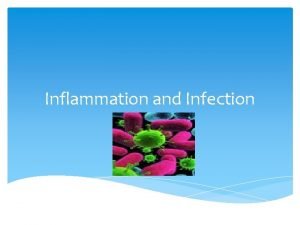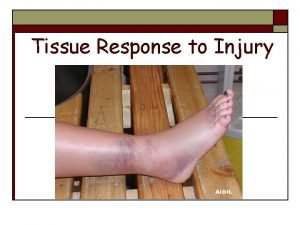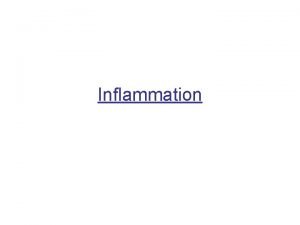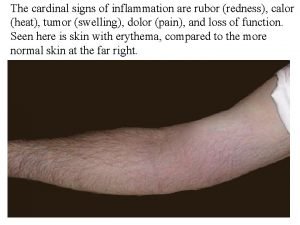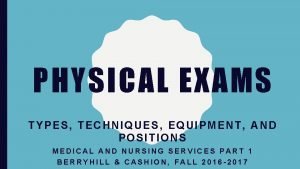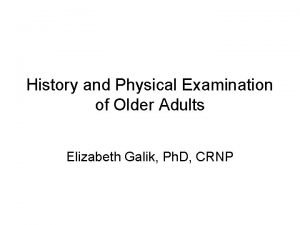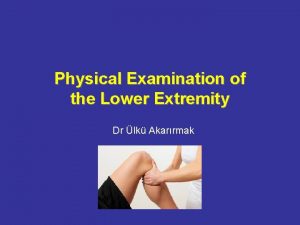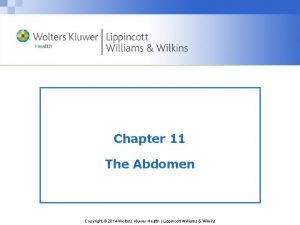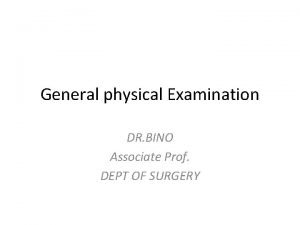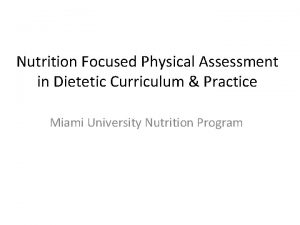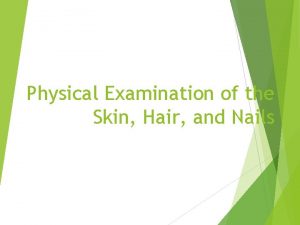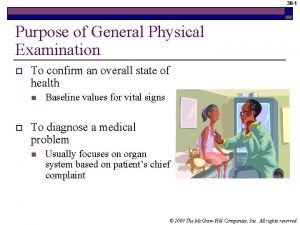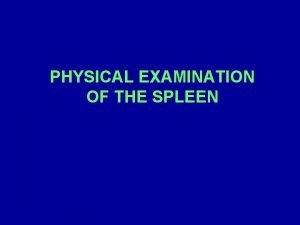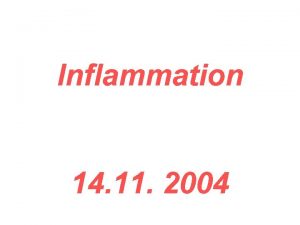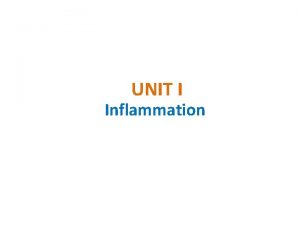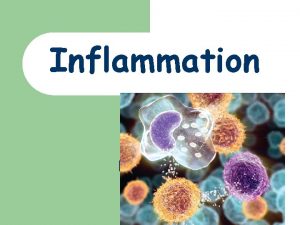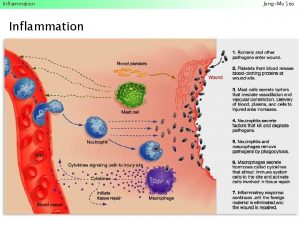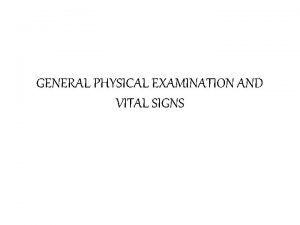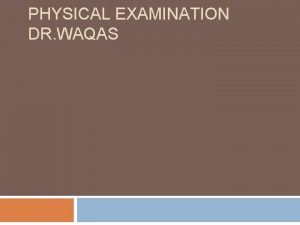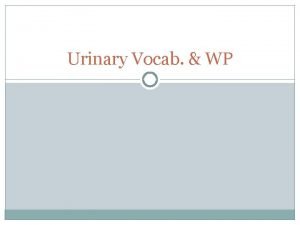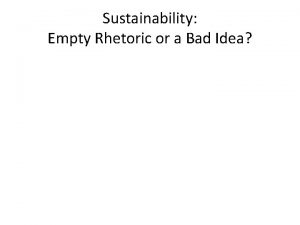MASTITIS2 DIAGNOSES Physical examination Signs of inflammation Empty























- Slides: 23

MASTITIS-2

DIAGNOSES

Physical examination Signs of inflammation Empty udder Differences in firmness Unbalanced quarters Cowside tests California Mastitis test Cultured Analysis The most reliable and accurate method

Chemical examination 1 - PH 6. 4 -6. 8 normal Mastitic milk is alkaline Bromothymol blue Bromocresol purple 2 - Chloride test: 0. 08 – 0. 14 3 - White side test: 5% sod. Hydroxide…. . clots (leucocytes number).

4 - CMT 5 - Hotis test for detection of St. agalactia 6 - Tuberculous milk Stain with ziehl neelsen stain Lab animal inoculation 2 G. Pigs After 4 and 8 weeks

Prevention and control

Clean All that stands between the udder and infection Milkers must wear gloves and Keep them Clean Keep Milking Units Clean Keep cow platforms Clean

Adequate Drying Most important step in premilking hygiene Moisture is a growth requirement for bacteria Herds that dried teats had SCC 44, 000 cell/ml lower than herds that did not (Moxley et al. , 1978) Wet towels can’t adequately dry teats

Teat Dipping Primary Reason to Teat Dip is to Remove the Milk Film Left on the Teat After Milking With a Layer of Germicide

Teat Dip Coverage Pre and Post Dip or Foam coverage should be at least 75%

Culturing Programs Need appropriate sample collection and storage Must have a plan to utilize information Individual cow cultures-fresh, clinicals, high scc cows (two different plans) Bulk tank cultures Bedding cultures If you don’t have a “game plan” don’t waste your money!

Objectives of Mastitis Therapy

Objectives of Mastitis Therapy Return to Saleable Milk Establish Clinical Cure Avoid Drug Residue Reduce Somatic Cell Count Limit Udder Damage Minimize long-term milk loss Achieve bacteriological cure Prevents spread of mastitis Prevents relapses

Antibacterial Therapy Response to Treatment Influenced by: Cows immune response Severity of mastitis Duration of infection Causative pathogen Drug used

The targeted compartment should be considered when choosing antibiotic treatment Milk- environmental Streps. And Staphs. Blood- E. coli, Klebsiella Mammary tissue- Staph. Aureus, some Streps, E. coi

Mastitis Treatment Protocols Grade Clinical Signs Treatment 1 Milk abnormal Udder not swollen Cow normal Take sterile milk sample and culture. Decide to treat based on results. Possible supportive therapy 2 Milk abnormal Udder swollen Cow normal Take sterile milk sample and culture. Treat in udder with antibiotic. Possible systemic/supportive therapy 3 Milk abnormal Udder swollen Cow sick Take sterile milk sample and culture. Treat systemically and in udder with antibiotics and supportive therapy


Control of Contagious Mastitis Dip teats in germicide Treat quarters with dry cow antibiotics at end of lactation Milking order or separate claw for infected cows Flush milk claws (hot water or germicide) after milking infected cows (backflushing) Individual cloth/paper towels to wash/dry teats Clean hands, latex gloves Cull persistently infected cows Minimize teat end lesions Dry treat heifers before calving

Control of Environmental Mastitis More difficult to control than the contagious pathogens. Most are resistant to germicides in teat dip and antibiotics in dry cow therapy. Key is to ID source and remove (bedding, ponds, mud). Clip or flame udders. Milk only clean dry teats

Failure of Therapy Stopping therapy to soon Swollen udder parenchyma/blocked milk ducts Scar tissue/micro-abcesses Inactivation by milk and tissue proteins Microbial resistance

Mastitis Vaccines Effective Immunization is Difficult Volume of milk dilutes the number of immune cells Fat and casein reduce bactericidal abilities of immune cells Cows are exposed to numerous bacteria Milk is an excellent substrate for growth

E. Coli J-5 Bacterin Indications: J-5 Escherichia Coli Bacterin is for use in healthy dairy cattle as an aid in the control of clinical signs associated with E. coli mastitis. Ingredients: J-5 Escherichia Coli Bacterin contains Escherichia Coli Bacterin J-5 Strain Dosage and Administration: Cows: Administer 5 ml J-5 Escherichia Coli Bacterin Subcutaneous at 7 and 8 months gestation, and postparturient. Does: Administer 2 ml J-5 Escherichia Coli Bacterin Subcutaneous at 3 and 4 months gestation, and postparturient. Sows: Administer 2 ml Intramuscular under ear at breeding, 2 months gestation, and postparturient. Storage: Store at 35° F to 45° F (2° C to 7° C). Do not freeze. Use entire contents when first opened. Caution: J-5 Escherichia Coli Bacterin has a 42 day withdrawal.

Vaccine Types Staphylococcus aureus Lysigin is a lysed culture of highly antigenic polyvalent somatic antigen containing phage types I, III, IV and miscellaneous groups of Staph aureus. LYSIGIN is recommended for the vaccination of healthy, susceptible cattle as an aid in the prevention of mastitis caused by Staphylococcus aureus.
 All the signs for driving
All the signs for driving 5 cardinal signs of inflammation
5 cardinal signs of inflammation Cardinal signs of inflammation
Cardinal signs of inflammation Acute inflammation
Acute inflammation Cardinal symptoms of inflammation
Cardinal symptoms of inflammation Cardinal features
Cardinal features Types of nursing diagnoses
Types of nursing diagnoses What color means motorist services guidance
What color means motorist services guidance Triangular signs are used exclusively for _____ signs.
Triangular signs are used exclusively for _____ signs. Natural signs examples
Natural signs examples Physical examination equipment
Physical examination equipment Bostjan malovrh
Bostjan malovrh Tactile fremitus location
Tactile fremitus location Office-based pre-participation physical examination
Office-based pre-participation physical examination Shingles older adults
Shingles older adults Principles of physical examination
Principles of physical examination Physical examination techniques
Physical examination techniques Physical examination of a patient
Physical examination of a patient Nutrition focused physical examination
Nutrition focused physical examination Bulla skin
Bulla skin Positioning and draping for physical examinations
Positioning and draping for physical examinations Bimanual spleen palpation
Bimanual spleen palpation Pitting edema scale
Pitting edema scale Principles of physical examination
Principles of physical examination

